Before jury trials were common, alleged criminals had to prove their innocence by undergoing painful — and sometimes deadly — tests involving water, fire, or burning metal.
In the modern world, the fate of an accused criminal is decided by a judge and jury. But back in medieval times, there was another method of determining whether someone was guilty or innocent: trial by ordeal.
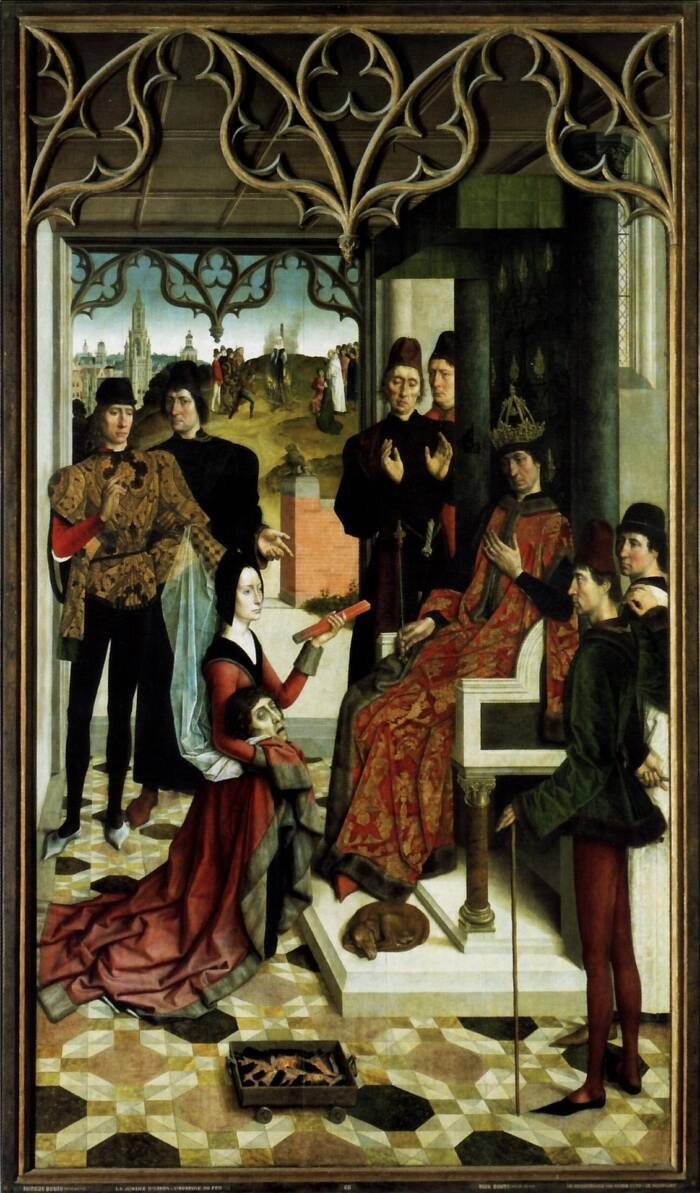
Public DomainA widow holds a red-hot iron along with the decapitated head of her husband to prove that he was innocent of the crime he was executed for.
These trials put the fate of the accused in God’s hands. Suspected criminals would be forced to perform a painful or dangerous task, such as holding hot iron or being thrown into water. If they were innocent, God would step in with a miracle to save their life. If they were guilty, they would face a grisly death.
Priests were initially involved in the process, blessing objects before they were used in the ordeals or deciding whether or not divine intervention had occurred. By the 13th century, however, a papal decree prohibited priests from participating in trials by ordeal, as they began to be seen as testing God by demanding he perform a miracle.
From then on, these trials slowly faded out of use. Some remained popular, such as the “swimming tests” used in witch hunts across Europe, or trial by combat, which wasn’t banned in England until the 19th century. Today, however, trials by ordeal are simply a disturbing reminder of our ancestors’ idea of justice.
The Medieval Ordeal Of Trial By Fire
One common trial by ordeal in medieval times was the trial by fire. There were a few different types, but one of the best documented involved an accused criminal holding a red-hot iron rod and walking nine feet. This left a nasty burn on their hand, which was closely observed over the next three days. If it started to heal properly, they were deemed innocent. But if it festered or became infected, they were considered guilty.
One famous trial by fire case involved a French mystic named Peter Bartholomew. In 1099, Peter volunteered to undergo the ordeal to prove that he had truly discovered the Holy Lance, the spear that purportedly pierced Jesus’ side during his crucifixion. He was to walk between two burning piles of brush while holding the lance, and if he and the relic emerged unharmed, it would be evidence that he was telling the truth and the Holy Lance was indeed legitimate.
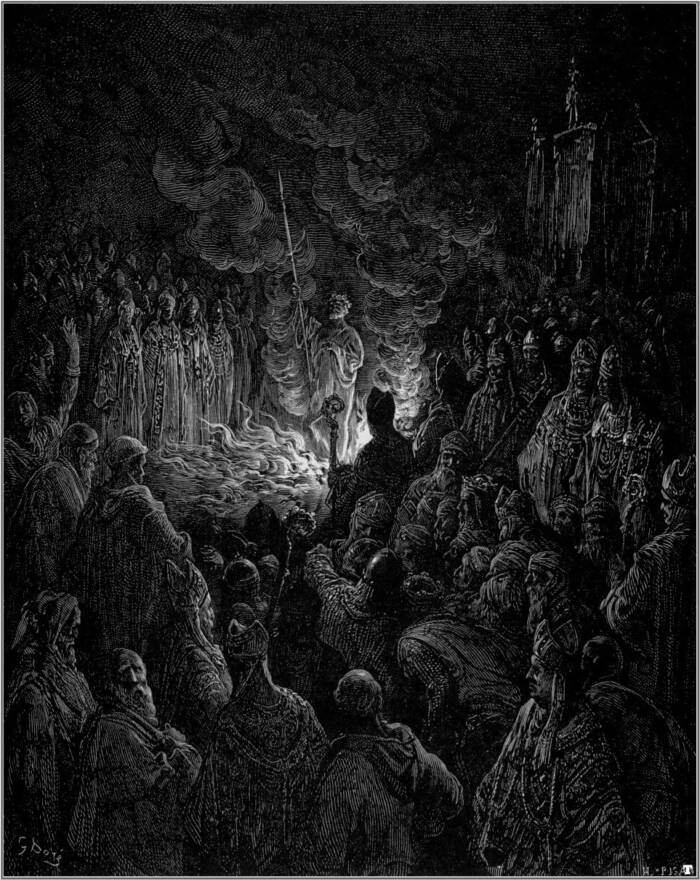
Public DomainPeter Bartholomew going through the ordeal of fire.
Peter died from his injuries a few days later.
Other versions of this trial by ordeal involved pouring hot metal on the chest of the accused or forcing a criminal to stand on the blade of a plow that had been heated until it glowed red. Emma of Normandy, the mother of King Edward the Confessor, is said to have undergone this specific ordeal when she was accused of having an affair with a bishop. To prove her innocence, she had to walk over nine burning plowshares — and, as the legend goes, she felt no pain because she was indeed chaste.

Public DomainWilliam Blake’s 1779 painting of Queen Emma’s trial by fire in the 11th century.
Trials by fire weren’t the only painful ordeals used in medieval times, though.
Trial By Water And Its Use In Medieval Witch Hunts
Trials by water are among the most well-known medieval ordeals, mainly due to their prevalence during witch trials.
During this ordeal, the accused was tied up with a rope and tossed into a nearby body of water, such as a river or lake. If they sank, they were considered to be innocent and pulled out of the water before they drowned. However, if they began to float, they were deemed guilty.
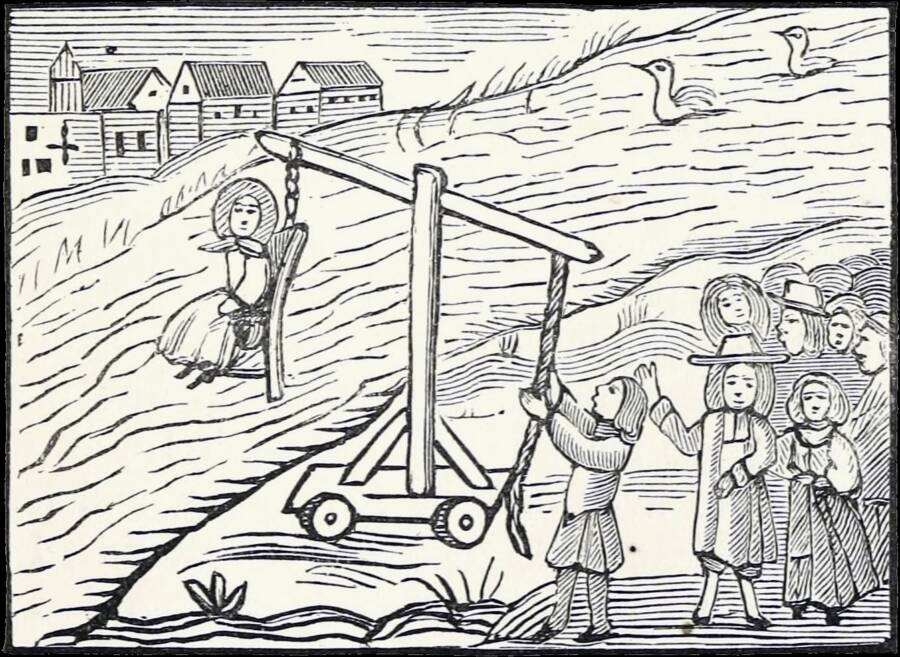
Public DomainAn 18th-century illustration of a suspected witch preparing to undergo a trial by water.
Similar trials by water date all the way back to the Code of Ur-Nammu, the oldest known set of laws that was written in Mesopotamia around 2100 B.C.E. The code states, “If a man is accused of sorcery he must undergo ordeal by water; if he is proven innocent, his accuser must pay three shekels.”
In the 16th century, King James VI and I of Scotland and England wrote of the logic behind this ordeal in his treatise Daemonologie: “[S]o it appears that God hath appointed (for a supernatural sign of the monstrous impiety of the Witches) that the water shall refuse to receive them in her bosom, that have shaken off them the sacred Water of Baptism, and willfully refused the benefit thereof.”
That is, witches who had rejected their baptism by working with the Devil were thought to float in water because it repelled them.
In another water-related trial, accused criminals were forced to put their hands in a cauldron full of boiling hot water or oil to retrieve a stone or ring placed at the bottom. And in a similar ordeal, both the accused and their accuser had to reach into the cauldron. Whoever was burned the least “won” the case.
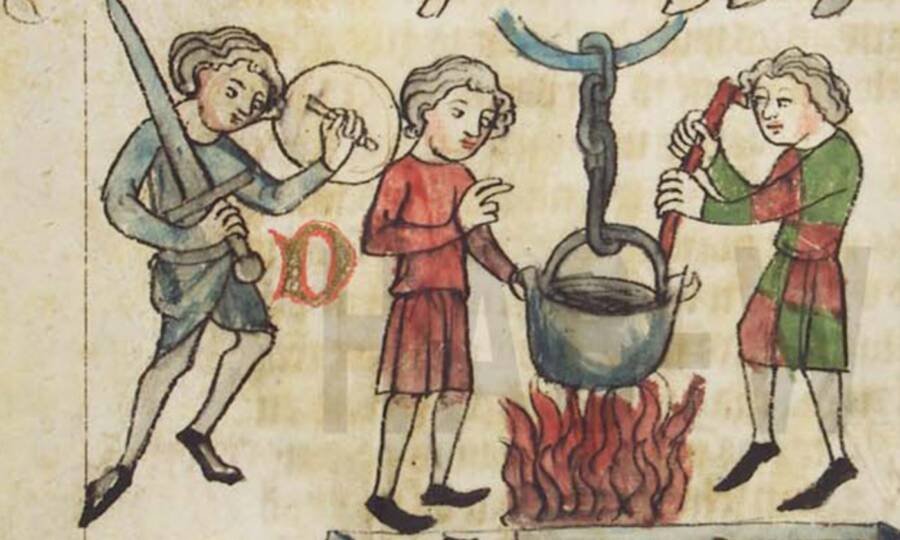
Public DomainAn accused criminal prepares to undergo a trial by boiling water.
While these trials by fire and water were the most common, there were plenty of others — each one more bizarre than the last.
Bleeding Corpses And Justice By Cheese
Perhaps one of the strangest trials by ordeal was the “trial by ingestion,” in which guilt or innocence came down to a piece of cheese. A priest would bless bread and cheese, and if the accused could eat it normally, they were innocent. However, if they struggled or choked on the bite of cheese, they were declared guilty.
Then, there was the trial by bleeding. In the case of murder, a suspect would be taken to the victim’s body. If the fatal wound on the corpse began “bleeding afresh,” the suspect was arrested as the murderer.
In 1503, a Swiss soldier named Hans Spiess was accused of killing his wife, Margret. While he swore that he was innocent, he was brought to her corpse — and it started bleeding. Spiess was convicted of murder and executed for the crime.
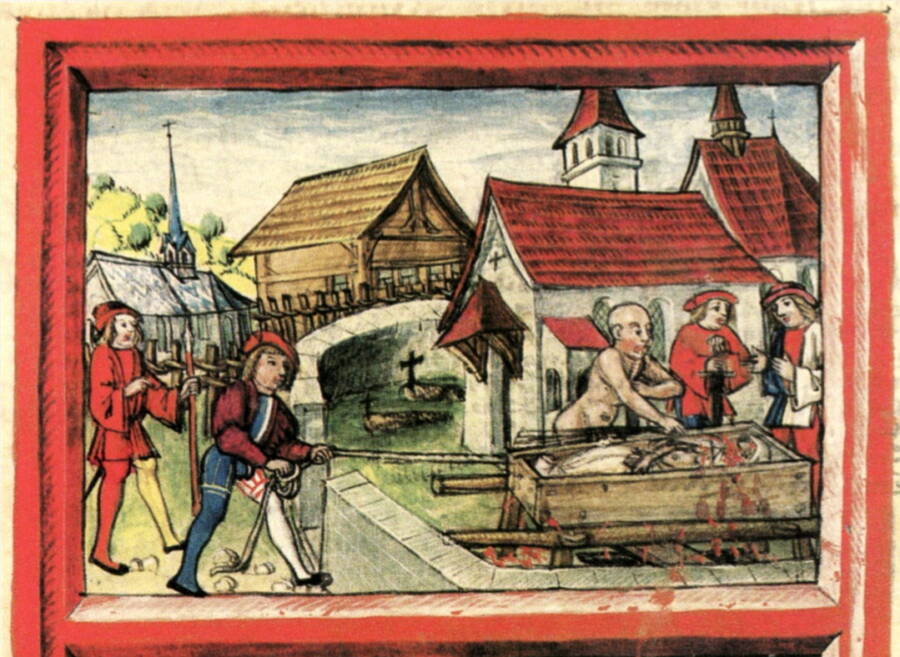
Public DomainA 16th-century illustration of Hans Spiess touching his wife’s corpse.
A reference to this ordeal appears in Shakespeare’s Richard III during the funeral of King Henry VI. The monarch’s daughter-in-law, Lady Anne, confronts his murderer by saying: “O, gentlemen, see, see! dead Henry’s wounds / Open their congeal’d mouths and bleed afresh!”
Shakespeare also referenced trial by combat in his plays, another popular trial by ordeal that was introduced by the Normans in 1066 and continued well into the 19th century. It was believed that this type of ordeal could solve a dispute by allowing God to select which side he supported and intervene to ensure that man came out on top.
Of course, participants could choose a champion to fight in their place. This meant that wealthier people could hire the best fighters, giving them a better chance of winning.
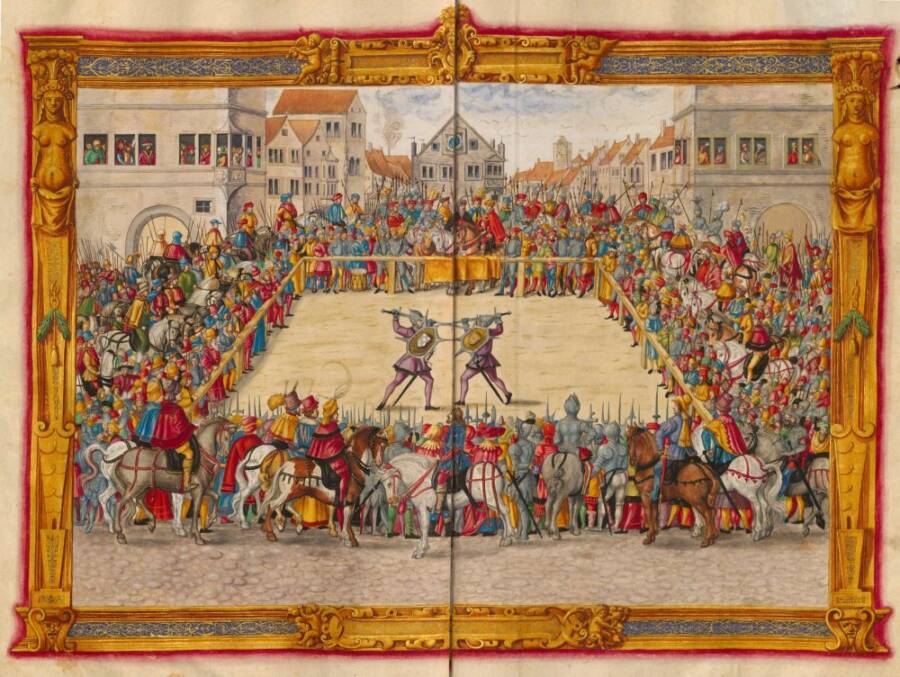
Public DomainThe trial by combat of Marshal Wilhelm von Dornsberg and Theodor Haschenacker in Augsburg, Germany, in 1409.
Loopholes like these weren’t the only reason for the decline of trials by ordeal, but they certainly contributed to the end of the practice.
The Downfall Of Medieval Trials By Ordeal
By the 19th century, priests had been forbidden from participating in trials by ordeal for hundreds of years. In 1215, Pope Innocent III had issued a decree that stated, “No cleric may decree or pronounce a sentence involving the shedding of blood… nor may anyone confer a rite of blessing or consecration on a purgation by ordeal of boiling or cold water or of the red-hot iron.”
Priests’ participation in trials by ordeal was seen as forcing God to intervene and thus testing him.

Public DomainA papal decree given by Pope Innocent III in 1215 was the beginning of the end for trials by ordeal.
Around the same time, jury trials were becoming more common. In 1219, King Henry III introduced the use of juries in felony cases, eliminating much of the need for the medieval ordeals. While they certainly continued past that point, their popularity waned as the centuries went on.
Eventually, trials by ordeal came to an end completely, and they are now cemented in history as a barbaric medieval practice that led to the imprisonment and deaths of many innocent people.
After reading about medieval trials by ordeal, go inside the history of these medieval torture devices. Then, look through these surprisingly dirty medieval manuscripts.





